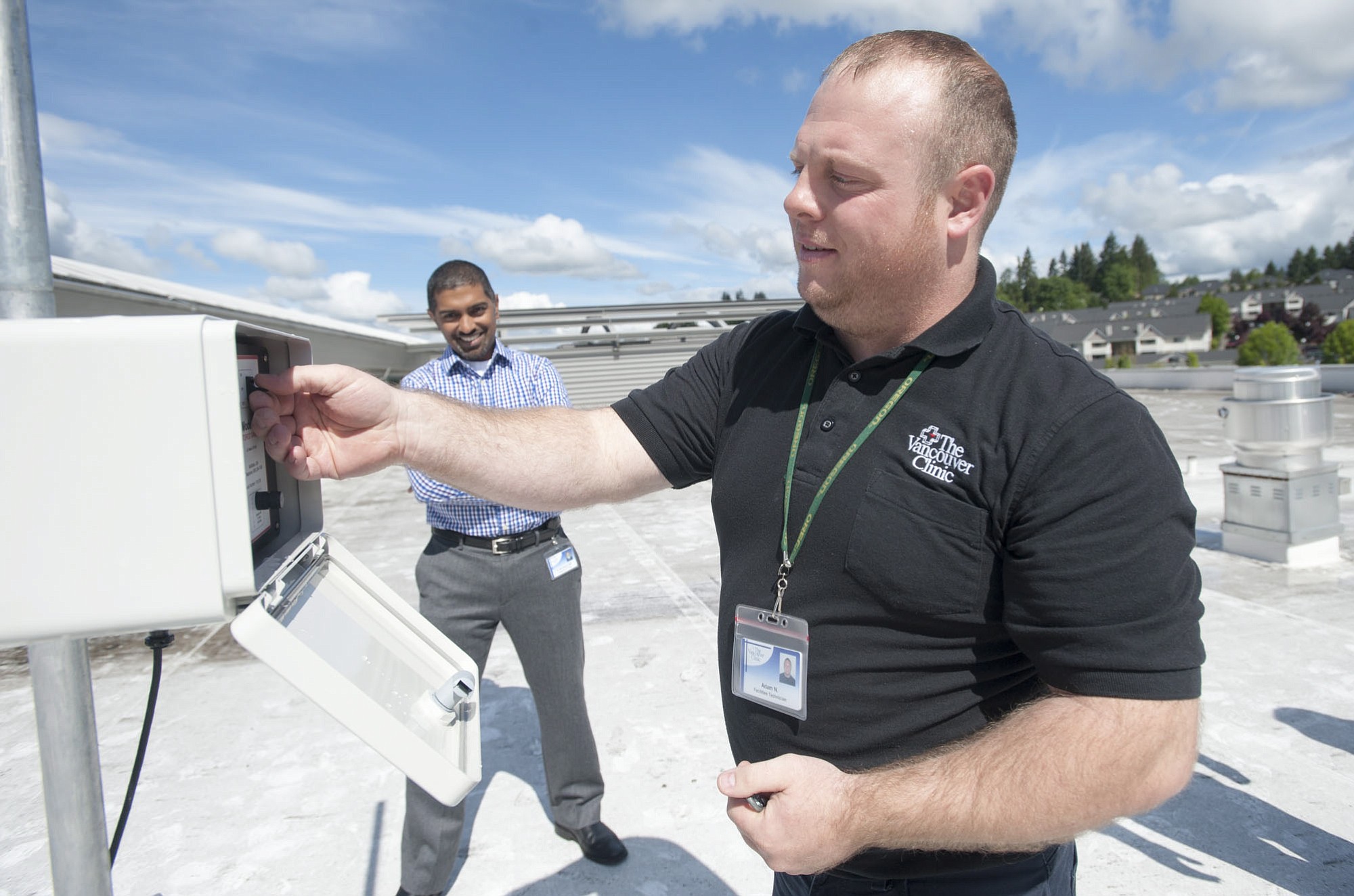Get Alerts
To sign up for alerts with data from The Vancouver Clinic’s Salmon Creek pollen station:
• Visit the American Academy of Allergy, Asthma and Immunology website, www.aaaai.org/nab.
• Click the “Access/signup for my NAB” link on the right side of the page.
• Create a free account.
• Select the “Vancouver, WA” station.
Allergy sufferers in Clark County have a new resource for monitoring pollen levels — just in time for the dreaded grass season when hay fever reaches fever pitch.
Get Alerts
To sign up for alerts with data from The Vancouver Clinic's Salmon Creek pollen station:
• Visit the American Academy of Allergy, Asthma and Immunology website, <a href="http://www.aaaai.org/nab">www.aaaai.org/nab.</a>
• Click the "Access/signup for my NAB" link on the right side of the page.
• Create a free account.
• Select the "Vancouver, WA" station.
The Vancouver Clinic’s Salmon Creek office is now an official pollen counting station, recording the number and type of pollen grains suspended in the Vancouver air three days a week. That data is reported to the National Allergy Bureau, which collects information from about 80 stations across the country. The next closest stations are in Seattle and Eugene, Ore.
That means Clark County residents can now have an accurate picture of just what is causing their itchy eyes and take steps to prevent symptoms that make allergy season insufferable for many.
“With the weather changes, it’s nice to know what’s going on outside,” said Dr. Raj Srinivasan, chair of The Vancouver Clinic’s allergy and pulmonology medicine department.
Srinivasan operates the pollen station.
“Allergies are something, if you can reel them in, you can really improve quality of life,” he said.
Srinivasan collects data using a Rotorod machine that sits on the roof of the medical clinic. Every Monday, Tuesday and Wednesday, facilities technician Adam Norman attaches a new collection tray to the machine.
The tray has two small rods that flip open as the tray spins. Particles in the air cling to the rods, which are coated with a silicone grease. After 24 hours, Norman retrieves the tray and Srinivasan gets to counting.
Using a microscope, Srinivasan counts the number and type of allergens collected — identifying each by their size, shape and other unique features — and enters the numbers into a spreadsheet where a formula calculates the number of grains per cubic meter. That data is then used to determine whether pollen levels are low, moderate, high or very high for each of the categories: trees, grass and weeds.
Many websites and mobile apps predict pollen levels in an area by using weather forecasts, the time of year and previous years’ pollen levels rather than actually counting pollen grains from the air, Srinivasan said. Those computer modeling predictions don’t identify which specific grains are prevalent, whereas Srinivasan counts and categorizes everything he finds and lists the top grains found in each category.
“To get data is laborious, so it’s easier to use modeling,” Srinivasan said.
In Clark County, tree pollen levels have been low to moderate lately, with higher levels of ash and pine particles (pine, however, is not allergenic). Srinivasan expects tree pollen levels to drop off in the next couple of weeks as grass pollen picks up.
“We’ve started to see grass pollen the last week or so,” Srinivasan said Wednesday. “Grass is our big allergen here in the Northwest.”
“For us, this month and next month are the big hurdles,” he added. “Now through July.”
The warm, dry spring weather likely means we’ll see a broader range of pollens this year, Srinivasan said. Rainy springs can sometimes mute trees from blossoming and pollinating. That’s not the case this year; Srinivasan has recorded a variety of tree pollens this spring.
And as we enter grass season, Srinivasan is already seeing occasional weed pollens, he said.
“I think you’re going to see a full spectrum of allergens,” Srinivasan said.
And the local pollen counts can help people to be prepared for allergy symptoms, Srinivasan said. If people see high levels of a certain allergen — oak pollen, for example — and notice more symptoms, they’ll know to begin taking their medications at the first appearance of the allergen.
People who suffer from asthma also may use that information to decide whether they should avoid outside activities or plan to avoid peak times, Srinivasan said.
“Invariably, patients are caught off guard,” he said. “Knowing that it’s already happening, it’s advantageous.”




